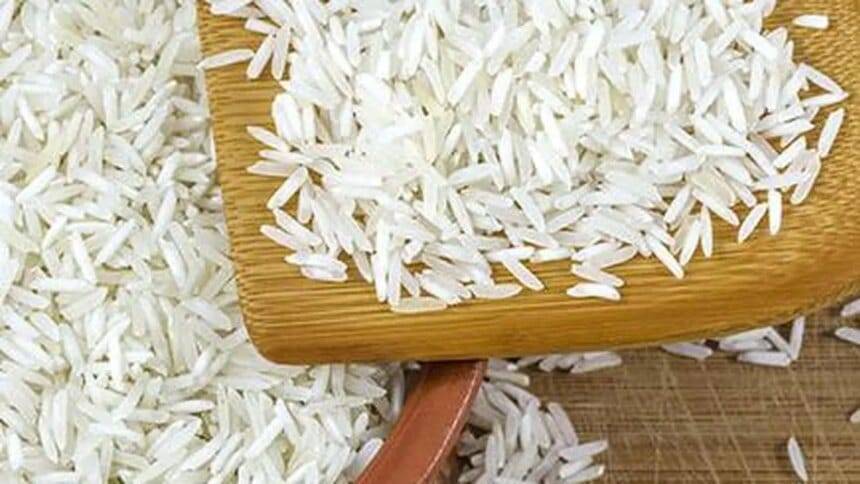Main Points In Hindi (मुख्य बातें – हिंदी में)
-
बासमती धान की कीमतों में सुधार: न्यूनतम निर्यात मूल्य (एमईपी) के समाप्त होने के बाद बासमती धान की कीमतें ₹2,800-2,900/क्विंटल तक पहुँच गई हैं, जबकि पिछले साल यही कीमत लगभग ₹3,500/क्विंटल थी। यह सुधार किसानों के लिए उम्मीद के मुताबिक नहीं है, क्योंकि वे पिछले वर्ष की कीमतों की अपेक्षा कर रहे थे।
-
मध्य पूर्व का भू-राजनीतिक तनाव: विशेषज्ञों का मानना है कि चल रहे भू-राजनीतिक तनावों के कारण आने वाले महीनों में निर्यात कीमतें बढ़ सकती हैं, हालांकि किसान वर्तमान मूल्य स्तरों से संतुष्ट नहीं हैं।
-
बाजार में मांग और आपूर्ति की स्थिति: हरियाणा में प्रीमियम बासमती 1121 की कीमत ₹3,800-4,000/क्विंटल है, जो पिछले साल की अपेक्षा कम है। कृषि उत्पादकों का मानना है कि दिवाली के बाद कीमतें बढ़ेंगी, जबकि निर्यातकों को मध्य पूर्व में दिक्कतों का सामना करना पड़ सकता है।
-
विदेशी बाजार और निर्यात आंकड़े: भारत का बासमती चावल निर्यात 2023-24 में 5.8 बिलियन डॉलर मूल्य का 5.24 मिलियन टन था। ईरान से निर्यात में कमी आई है, जिससे भारतीय किसानों पर दबाव बढ़ा है।
- किसानों की चिंता और फ़सल कटाई: किसान फसल की गुणवत्ता औरकीमतों की उम्मीद कर रहे हैं, जबकि उन्हें कीटों के हमले और फसलों के नुकसान का सामना करना पढ़ रहा है। किसानों की तैयारी में मजदूरों की उपलब्धता भी एक महत्वपूर्ण कारक है।
Main Points In English(मुख्य बातें – अंग्रेज़ी में)
Here are the main points from the article regarding the impact of the abolition of the Minimum Export Price (MEP) on basmati rice prices and current market conditions:
-
Price Increase Post-MEP Abolition: Following the end of the Minimum Export Price (MEP), basmati rice prices have improved, particularly for the Pusa Basmati 1509 variety, which is now priced at ₹2,800-2,900 per quintal in Haryana, up from ₹2,300 prior to the MEP’s removal. However, farmers are still dissatisfied as they expected higher prices compared to the previous year’s ₹3,500 per quintal.
-
Impact of Geopolitical Tensions: Experts suggest that ongoing geopolitical tensions in the Middle East could potentially drive export prices up in the coming months, although there are concerns that prolonged conflict may reduce overall demand for Indian basmati rice.
-
Market Demand and Trends: There’s optimism within the agricultural community that basmati prices may increase after the Diwali festival due to demand, but anxieties remain regarding potential drops in demand based on international developments, particularly from Iran, which has shown erratic purchasing patterns.
-
Farmers’ Expectations and Challenges: While farmers are hopeful for better prices this season, challenges such as pest attacks have reduced yield expectations significantly compared to last year. Additionally, labor shortages and changes in harvesting practices due to environmental concerns are affecting the harvest process.
- Regulatory Context: The Indian government’s removal of the MEP at $950 per ton was aimed at addressing falling rice prices and preventing non-basmati rice from being exported under the basmati label. This regulatory shift reflects the government’s attempt to stabilize the basmati rice market amid fluctuating conditions.


Complete News In Hindi(पूरी खबर – हिंदी में)
न्यूनतम निर्यात मूल्य (एमईपी) समाप्त होने के बाद बासमती (धान) की कीमतों में सुधार हुआ है, लेकिन किसान उतने खुश नहीं हैं जितनी उन्हें पिछले साल की दर मिलने की उम्मीद थी। हालाँकि, विशेषज्ञों का कहना है कि मध्य पूर्व में मौजूदा भू-राजनीतिक तनाव आने वाले महीनों में निर्यात कीमतों को किसी भी तरह से बढ़ा सकता है।
वर्तमान में, हरियाणा में कृषि बाजार यार्ड (मंडियों) में पूसा बासमती 1509 किस्म (असंसाधित धान) की कीमत ₹2,800-2,900/क्विंटल है, जबकि उच्च नमी वाली जल्दी काटी गई फसल एमईपी के उन्मूलन से पहले लगभग ₹2,300 में बेची जाती थी। किसानों ने कहा. पिछले साल, किसानों को पीबी 1509 किस्म के लिए लगभग ₹3,500/क्विंटल मिले थे।
प्रीमियम पूसा बासमती 1121 कम मात्रा में आना शुरू हो गया है और हरियाणा में इसकी कीमत 3,800-4,000 रुपये प्रति क्विंटल है, जबकि पिछले साल किसानों को 4,500-4,700 रुपये प्रति क्विंटल का दाम मिला था। करनाल मंडी में कमीशन एजेंटों ने कहा कि मांग है और उन्हें उम्मीद है कि दिवाली के बाद बासमती की कीमतें बढ़ेंगी, जबकि निर्यातक मध्य पूर्व के विकास पर करीब से नजर रख रहे हैं और उन्हें डर है कि अगर संघर्ष और बढ़ा तो मांग में गिरावट आएगी।
कृषि और किसान कल्याण मंत्रालय की इकाई एगमार्कनेट के अनुसार, एमईपी समाप्त होने के दिन पीबी 1509 धान की भारित औसत कीमत ₹2,512 प्रति क्विंटल थी और 13 अक्टूबर को हरियाणा में यह बढ़कर ₹2,756/क्विंटल हो गई है। . पंजाब में, पीबी 1509 की वर्तमान दर ₹2,651/क्विंटल है, जो 13 सितंबर को औसत ₹2,670/क्विंटल (अमृतसर, गहरी और मजीठा मंडियों में) से कम है।
29 सितंबर को, अमृतसर (पंजाब) में कई किसानों ने ताजा कटी बासमती फसल के लिए बेहतर कीमतों की मांग करते हुए विरोध प्रदर्शन किया।
नरेश कुमार और सोम दत्त, दोनों हरियाणा के करनाल जिले से हैं और पारंपरिक बासमती किस्म पूसा 30 उगा रहे हैं, उन्हें पिछले साल की तुलना में बेहतर कीमतें मिलने की उम्मीद है क्योंकि कीटों के हमले के कारण कई जगहों पर फसल खराब हो गई है। कुमार ने कहा, “पिछले साल कीमत ₹7,000/क्विंटल थी और इस साल यह कम से कम ₹8,000/क्विंटल होनी चाहिए,” कुमार ने कहा, जो 15-20 दिनों के बाद फसल काटने का इंतजार कर रहे हैं। दत्त ने कहा कि औसत उपज पिछले साल के 14-15 क्विंटल से घटकर 8-10 क्विंटल प्रति एकड़ रह सकती है।
“हम मजदूरों (राज्य के बाहर से) के आने का इंतजार कर रहे हैं क्योंकि दशहरा उत्सव अब समाप्त हो चुका है। फसल कटाई के लिए लगभग तैयार है, ”भारत के सबसे बड़े बासमती चावल उत्पादक राज्य हरियाणा के सोनीपत के बासमती किसान अशोक अंतिल ने कहा। उन्होंने आगे कहा कि हाथ से कटाई करने की मजबूरी बनी रहेगी क्योंकि अब कोई भी किसान पराली नहीं जलाना चाहता और अब चारे के रूप में इसकी मांग है।
2023-24 में बासमती चावल का निर्यात 5.8 बिलियन डॉलर (48,389.21 करोड़ रुपये) मूल्य का 5.24 मिलियन टन (एमटी) था, जिसकी औसत प्राप्ति 1113 डॉलर/टन थी। चालू वित्त वर्ष (अप्रैल-अगस्त) में बासमती चावल की शिपमेंट 2.32 मिलियन टन दर्ज की गई, जिसका मूल्य 2.5 बिलियन डॉलर (20,546 करोड़ रुपये) है और औसत प्राप्ति 1,059 डॉलर प्रति टन है। यूरोपीय संघ भारत के पारंपरिक बासमती चावल का प्रमुख खरीदार है।
“वर्तमान बासमती धान की कीमतें मांग-आपूर्ति लोच से संबंधित नहीं हैं। वहीं रुझान पर नजर डालें तो बासमती धान की कीमतों को लेकर भ्रामक माहौल नजर आ रहा है। बाजार की विशेषताओं को उचित हस्तक्षेप के माध्यम से नियंत्रित करने की आवश्यकता है, ”व्यापार नीति विशेषज्ञ एस चंद्रशेखरन ने कहा।
व्यापार सूत्रों ने कहा कि ईरान का बाजार भ्रामक है क्योंकि वहां से इस बारे में कोई संकेत नहीं मिला है कि वह कितनी मात्रा में खरीदारी कर सकता है। एक व्यापार सूत्र ने कहा कि इसके अलावा, भुगतान में चूक का मुद्दा भी है क्योंकि नए निर्यातक, जल्दी कमाने की उत्सुकता में, कोई उचित परिश्रम नहीं कर रहे हैं।
ईरान को बासमती चावल का निर्यात 2018-19 में रिकॉर्ड 1.5 मिलियन टन तक पहुंच गया और 2021-22 और 2022-23 दोनों में लगभग 1 मिलियन टन तक जारी रहा। लेकिन पिछले वित्त वर्ष में यह घटकर लगभग 0.7 मिलियन टन रह गया, लेकिन 2024-25 के पहले पांच महीनों में यह 0.4 मिलियन टन के करीब पहुंच गया है।
धान की गिरती कीमतों के कारण दबाव में आने के बाद भारत ने बासमती चावल पर 950 डॉलर प्रति टन का एमईपी हटा दिया। वाणिज्य मंत्रालय ने कृषि और प्रसंस्कृत खाद्य पदार्थ निर्यात विकास प्राधिकरण (एपीडा) से बिना किसी न्यूनतम मूल्य के बासमती निर्यात को पंजीकृत करने के लिए कहा। एमईपी को 2013 में यह सुनिश्चित करने के लिए पेश किया गया था कि चावल की अन्य किस्मों, विशेष रूप से सफेद, को बासमती चावल की आड़ में देश से बाहर नहीं भेजा जाए।
Complete News In English(पूरी खबर – अंग्रेज़ी में)
After the minimum export price (MEP) for basmati rice was removed, rice prices began to increase. However, farmers are not as pleased as they expected to receive better prices compared to last year. Experts suggest that ongoing geopolitical tensions in the Middle East could potentially drive export prices up in the coming months.
Currently, the price of Pusa Basmati 1509 variety (unprocessed rice) in agricultural markets in Haryana ranges from ₹2,800 to ₹2,900 per quintal, which is an improvement from around ₹2,300 before the MEP was abolished. Last year, farmers received about ₹3,500 per quintal for this variety.
The premium Pusa Basmati 1121 is starting to enter the market in lower quantities, priced between ₹3,800 and ₹4,000 per quintal, compared to ₹4,500 to ₹4,700 last year. Agents in the Karnal market report demand for basmati and anticipate that prices will rise after Diwali. However, exporters are closely monitoring the situation in the Middle East, fearing that increased conflict could reduce demand.


According to Agmarknet, a unit of the Ministry of Agriculture and Farmers’ Welfare, the average price of PB 1509 rice was ₹2,512 per quintal on the day the MEP was lifted, rising to ₹2,756 by October 13 in Haryana. Meanwhile, in Punjab, the current price for PB 1509 is ₹2,651 per quintal, down from an average of ₹2,670 per quintal in September.
On September 29, several farmers in Amritsar protested for better prices for freshly harvested basmati rice. Farmers Naresh Kumar and Som Datt from Karnal district, who grow the traditional Pusa 30 variety, are hopeful for better prices this year because some crops have been damaged by pests. Kumar mentioned that last year, prices were ₹7,000 per quintal, and he expects them to be at least ₹8,000 this year, as he plans to harvest in 15 to 20 days.
Farmer Ashok Antil from Sonipat, Haryana, noted that they are waiting for laborers to arrive after the Dussehra festival, as their crops are almost ready to be harvested. He added that manual harvesting will continue because farmers no longer want to burn stubble, as it is now in demand as fodder.
In the 2023-24 fiscal year, India’s basmati rice exports reached $5.8 billion (₹48,389.21 crore) for 5.24 million tons, averaging $1,113 per ton. In the current fiscal year (April-August), the exports recorded are 2.32 million tons, worth $2.5 billion (₹20,546 crore), averaging $1,059 per ton. The European Union is the largest buyer of India’s traditional basmati rice.
Experts like trade policy analyst S. Chandrasekharan argue that current prices for basmati rice are not aligned with demand and supply dynamics, suggesting that there is a misleading atmosphere regarding basmati prices that needs to be regulated through proper intervention.
Trade sources also note that the market in Iran is uncertain, with no clear indication of how much they intend to buy. Additionally, issues related to payment defaults by new exporters, who rush to earn quickly without proper diligence, have been raised.
Basmati rice exports to Iran peaked at a record 1.5 million tons in 2018-19 but remained around 1 million tons in both 2021-22 and 2022-23. However, they fell to approximately 0.7 million tons last fiscal year and reached nearly 0.4 million tons in the first five months of 2024-25.
Amid falling prices, India lifted the $950 per ton minimum export price on basmati rice. The Commerce Ministry has instructed the Agricultural and Processed Food Products Export Development Authority (APEDA) to register basmati exports without a minimum price. The MEP was introduced in 2013 to prevent the export of non-basmati rice varieties disguised as basmati.
Source link




